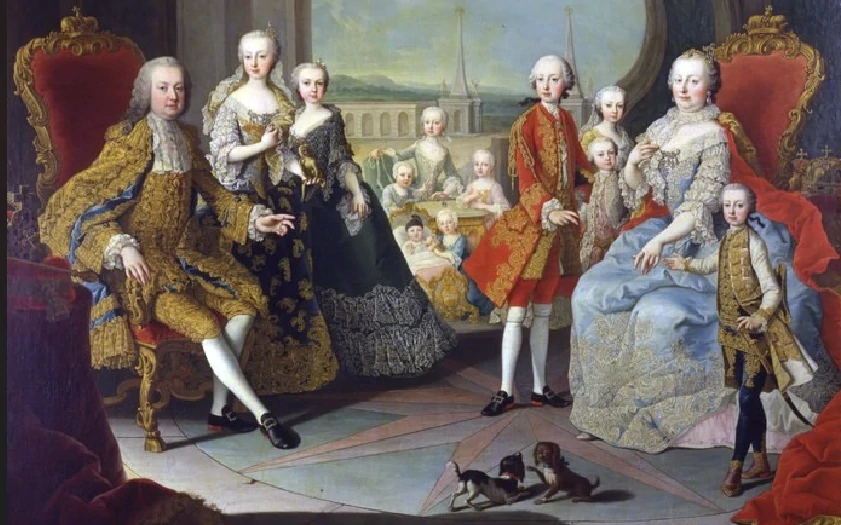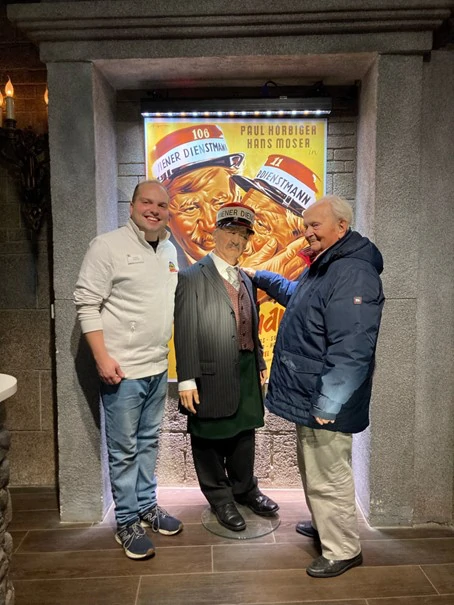When was the famous Vienna Ringstrasse built and which architects were involved? In what style is the most important traffic artery of Vienna designed. Why does it bear this name?
During the construction period from about 1860 – 1910 , the approximately 5 km long Vienna Ringstrasse was built , the magnificent boulevard of the 19th century , which surrounds the city center of Vienna . It was intended as the most important traffic artery and also served primarily for strolling . Many cafes, hotels and the most beautiful palaces lined and still line the Ringstrasse. Special events take place on the Ringstrasse, be it rallies or parades, also the Vienna City Marathon chooses the Ring as a beautiful running route. Vienna’s Ringstrasse looks like a ring encircling the city center, although strictly speaking it is shaped like a horseshoe .
The architecture of the buildings goes back to renowned architects , such as Theophil von Hansen, Gottfried Semper, Carl von Hasenauer and Heinrich von Ferstel . The style used is called historicism, which means that they did not invent a new style, but used the earlier styles. The State OperaHouse is built in neo-Renaissance style , the Vienna City Hall is neo-Gothic.
The streetcars no. 1 and 2 (change at the State Opera or Schwedenplatz) show you the Ringstraße with its magnificent buildings starting at Stubenring: former Ministry of War (today seat of various ministries) – opposite the Otto Wagner Postsparkasse – University of Applied Arts – Museum of Applied Arts (MAK) – Palais Coburg – Stadtpark – Hotel Imperial – State Opera – Hofburg with Burgtor and Heldenplatz – Museum of Art and Natural History- Maria Theresien statue in between – Museumsquartier (MQ) behind – Parliament – Volksgarten – City Hall including park and square in front of it – Burgtheater – University – Mölker Bastei (part of the old city fortifications) – Votivkirche – Deutschmeisterdenkmal – former stock exchange building- Ringturm – Franz Josephs-Kai – Danube Canal – (view right to the Ruprechtskirche) – Schwedenplatz – Urania- view of Ferris wheel in the distance – Stubenring.
After a complete round (takes about 30 minutes), you can get off again at Schwedenplatz and try the biggest Schnitzel in Vienna at the “Figlmüller” nearby! Attention: be sure to reserve! Afterwards we recommend a digestive walk through the “Bermuda Triangle”, where you can also find the Jewish Synagogue and the Ruprechtskirche, the oldest church in Vienna . Numerous pubs invite you for a drink or two. You can easily get lost in the Bermuda Triangle says 😉
Where nowadays the Vienna Ringstrasse is located, stood until the middle of the 19th century the city wall. The Napoleon’s French occupation forces blew up the castle at the beginning of the 19th century. the Vienna city wall between the Löwel and Augustinerbastei, which literally cracked the idea of fortification.
However, it was to take another 50 years before the handwritten letter expressed the will of Emperor Franz Josef to demolish the city walls and replace them with the famous Ringstrasse.
The city walls were no longer useful militarily and good profits could be made from the expensive glacis grounds (green parade grounds in front of the city walls). Thus, from 1858 onwards, systematic demolition took place, starting at the Rotenturmtor.
In addition to some street, alley and square names(Stubenbastei, Dominikanerbastei , Coburg- and Schottenbastei as well as Rotenturmstraße and Werdertorgasse), public transport stations (Schottentor, Stubentor) still remind of the old fortification.
Äußeres Burgtor or Heldentor: It is the only remaining gate of old Vienna, although not in its original form. In 1809 the city wall in the area of the Hofburg was blown up by Napoleon’s troops. As a result, the castle gate was moved to the southwest and rebuilt from 1821-24.
Coburg Bastei: The Palais Coburg has been renovated and converted into a hotel with one of the best wine cellars in Vienna. Remains of the fortifications from the 16th century. are put on display there. Today, events are held in the casemates, the underground vaults of the fortress.
Mölkerbastei: Here only the connecting wall to the former Löwelbastei is preserved. They did not want to demolish this because of the Pasqualati house and the Dreimäderlhaus that are on it.
Albertina: The higher Albertina still reminds us of the Augustinerbastei.
Dominican bastion: Here only the form is preserved, but not a piece of stone of the original wall.
Stubenbastei: At the subway station Stubentor you can still see parts of the old Renaissance wall.
Ruprechtskirche: Here, too, you can still see a tiny part of the old city wall.
Time Travel Tip:
There is also the possibility to take the old historic Vienna-Ring-Tram for a ride around the Ring. Audio guides are available in multiple languages and explain what you are seeing!
A bit more classic and a bit more expensive would be the ride in a Fiaker (horse-drawn carriage) along the most beautiful buildings of the Ringstrasse. Four people fit in one carriage and therefore the cost can be shared. The Viennese like to ride in a Fiaker on special occasions, be it a wedding, a round birthday, a first communion etc.
At Time Travel itself you get a taste of the Vienna Ringstrasse in the
last stop at the Fiaker flight! More is not revealed here 😉
More info: www.wienerlinien.at



